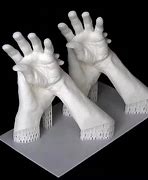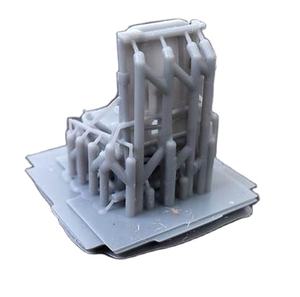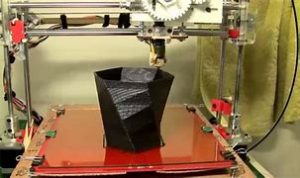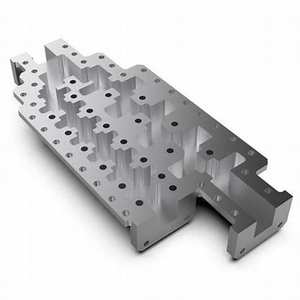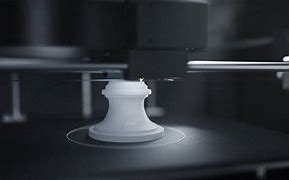Discover a professional 3D printing powder supplier
(Historical Highlights: Tracing the Origins of the First 3D Printer)
From Sci-Fi to Reality: The Time-Traveling Tale of the First 3D Printer
(Historical Highlights: Tracing the Origins of the First 3D Printer)
Imagine a machine that could materialize objects from thin air, like a futuristic genie conjuring a lamp. Sounds like something ripped from the pages of a 1950s sci-fi pulp magazine, right? But this isn’t fiction—it’s the origin story of the first 3D printer, a device that transformed wild imagination into tangible reality. Buckle up, because we’re diving into a time machine to uncover how this groundbreaking invention went from “impossible” to “I’ll print that tomorrow.”
Our journey begins in the early 1980s—a neon-soaked era of synth music, big hair, and even bigger dreams of technology. While most people were busy rewinding cassette tapes, a clever engineer named Chuck Hull was tinkering in a California lab, frustrated by the slow, clunky process of prototyping plastic parts. Back then, creating a single prototype could take weeks of carving, molding, and crossing fingers. Hull thought, *There has to be a better way*. Spoiler alert: There was.
Hull’s “aha!” moment came when he played with ultraviolet light. He realized that if he could harden photosensitive resin layer by layer using UV beams, he could build objects from the ground up—literally. In 1983, he fired up his invention, dubbed “stereolithography” (or SLA for short), and printed a modest little plastic cup. It wasn’t glamorous, but that cup was the Big Bang of 3D printing. Think of it as the primordial ooze from which everything from prosthetic limbs to rocket parts would eventually evolve.
But let’s pause here. Why was Hull’s invention such a game-changer? Picture this: Before SLA, making complex shapes required subtracting material—cutting, drilling, grinding. Hull flipped the script by *adding* material layer by layer, like a digital baker icing a cake. This method wasn’t just faster; it opened doors to geometries so intricate they’d give a traditional machinist nightmares. Suddenly, designers could dream up wild, spiraling, honeycombed structures and actually hold them in their hands.
Of course, the first 3D printer wasn’t exactly sleek. It resembled a mad scientist’s DIY project—bulky lasers, vats of gooey resin, and enough cables to knit a sweater. But it worked. By 1986, Hull patented the technology and co-founded 3D Systems, a company that’s still a titan in the industry today. The term “3D printing” hadn’t even been coined yet; back then, it was just “rapid prototyping.” Little did anyone know, this clunky machine would kickstart a revolution.
The 1990s and 2000s saw 3D printing evolve from a niche industrial tool to a cultural phenomenon. New techniques emerged, like fused deposition modeling (FDM), which replaced resin with melted plastic filament—hello, desktop 3D printers! By the 2010s, hobbyists were printing everything from custom chess pieces to cosplay armor in their garages. Meanwhile, industries like aerospace and healthcare began using 3D printing to create lightweight jet components and patient-specific implants. The tech even ventured into space—NASA now uses 3D printers on the International Space Station to fabricate tools on demand.
But let’s not forget the quirky side of this story. Early adopters had some… interesting ideas. One enthusiast famously printed a working replica of his own skeleton. Another created a 3D-printed flute and performed a concert with it. And yes, someone, somewhere, has definitely 3D-printed a potato (just because they could).
Today, 3D printing is everywhere—from classrooms to operating rooms—and it all traces back to Hull’s resin-and-light epiphany. What’s next? Bioprinting organs, constructing houses in a day, maybe even 3D-printed food that doesn’t taste like regret. The beauty of this technology is that its potential is as limitless as human creativity.
(Historical Highlights: Tracing the Origins of the First 3D Printer)
So the next time you see a 3D-printed object, remember: It’s not just plastic, metal, or ceramic. It’s a piece of history, a testament to the power of asking, “What if?” And who knows? Maybe your someday-grandkids will 3D print their homework while laughing at how we ever used “old-fashioned” paper.Inquiry us if you want to want to know more, please feel free to contact us. (nanotrun@yahoo.com) hot tags: 3d printing,3D printiner,3d printing material
(Historical Highlights: Tracing the Origins of the First 3D Printer)

